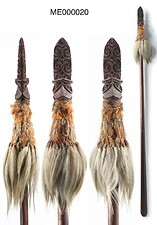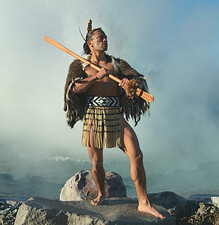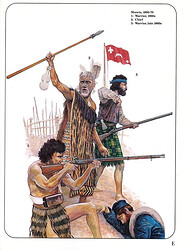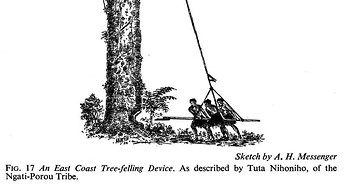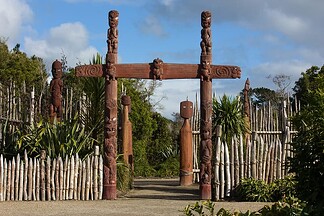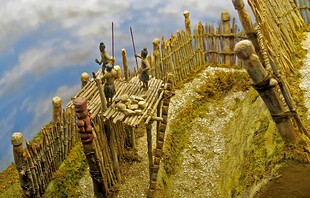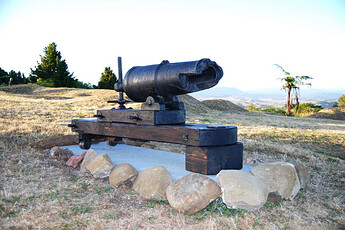Oceania is a region of huge untapped potential and the premier civilization of this region is the Maori. The warlike culture of the Maori and remoteness of their homeland in New Zealand kept them largely isolated from the rest of the world until the late 1700s. But once they gained access to European weapons and technology their society was rapidly transformed. This combination provides a very unique set of archaic units in the early game characterized by a largely melee focus with strong fortifications and a rapid progression to more advanced units that developed in the crucible to the Musket Wars and resistance to the British.
Polynesian Region
The Maori should be a part of an expansion that introduced Polynesian maps and a Polynesian minor civilization. I’ve made separate posts discussing those ideas here:
Polynesian Civilization Characteristics
A Polynesian civilization category could be created to include attributes of peoples like the Maori and Hawaiians. It could share a lot of similarities with the Native American factions in terms of units and buildings. Instead of a Community Plaza, a fourth resource called Mana (similar to influence) could be the defining feature of Polynesian nations. For Maori in particular, their tactic of intimidation using the Haka dance could also be a defining feature.
The Maori have been featured in mods such as Wars of Liberty and the approach in that rendition has a lot of excellent research but is a little convoluted in its implementation. Overall, a more standard design with regular Town Centers and a regular unit upgrade path would be more manageable.
Age Up
Aging up via voyages similar to what is done in WoL would also be a fitting feature. Voyages could be undertaken by the explorer unit but a more subtle approach than turning into a boat could be used. These voyages could be to Oceanic locales like Wahipounamu, Tahiti, Fiji, Kiribati, or Australia and further afield places such as Britain and America.
Leader
The Maori were originally disunited, but a unifying Maori king movement arose as a reaction to the British. The second Maori king Tawhiao could be their leader.
Home City
The settlement of Parihaka was one of the largest Maori villages and could act as their home city.
Polynesian Buildings
The Polynesian buildings would be largely the same as Native American buildings, but with uniquely Polynesian architecture and upgrades suitable for the Maori and Hawaiians. Instead of a Community Plaza building, Polynesians could have a mechanic revolving around a mana resource similar to the African influence resource.
Farm
Polynesian themed upgrades and crops like kumara and taro. Dogs were the only domesticated animals that the Maori had before outside contact. Europeans later introduced animals like sheep and pigs, so these could be the animals trained here. Hawaiians did have pigs before the arrival of Europeans.
Plantation/Estate
Polynesian themed upgrades and crops such as New Zealand flax, olona, and sugarcane.
Market
The upgrades featured in the WoL mod are a good example of a Polynesian themed market. A final woodcutting upgrade could be themed after Whakairo carving.
Pā
These are fortified strongholds of the Maori. The introduction of firearms kicked off an arms race between attackers and defenders leading to the creation of nearly indestructible fortresses. These earthworks were reminiscent of the trenches and bunkers of WW1 and could resist artillery bombardment. Due to this, soldiers should be able to garrison in Pa just like the Incan Stronghold. Analogous structures exist throughout Polynesia such as the shorturl.at/degly in Hawaii so a Pa could be a general Polynesian building.
Whare
A unique, elaborately carved Maori house. Functions to provide population, but could also have a religious and cultural component like for larger wharenui (meeting houses). This could tie into generating and spending mana. Healers could also be trained here.
War Hut & Siege Workshop
Infantry and siege combat was prevalent in Polynesia but the remote ocean locale meant cavalry was absent. Therefore, Polynesian civilizations would have access to War Huts and Siege Workshops as their standard military buildings. The Maori unit roster for these buildings is detailed below.
Units
The following are my attempt to fit the huge variety of unique Maori weapons into the basic roster a civilization needs. The stats shown are to give a better idea of what the intended role of these units would be. They are by no means balanced or fully refined.
The units would be primarily heavy infantry and siege and function as follows:
Age 2
Tao Spearman - essentially just a Pikeman
Taiaha Kaiwero - scaled down Jaguar Prowl Knight
Mere Runner - essentially just a Coyote Runner
Kotaha - stronger but more expensive Crossbowman that can siege like a Huaraca
Tipao - something between a Hand Mortar and Culverin
Age 3
H_eroa Warrior - scaled up Azap with always melee area damage
Tupara Musketeer - scaled up Carolean with area damage
Huata Mantlet - Mantlets but melee
Adze Ram - Rams that can gather wood
Age 4
Carronade - Falconet with more range
War Hut Units
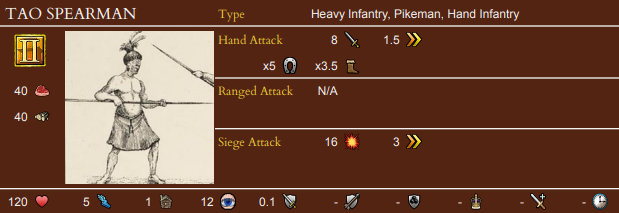
Tao Spearmen would be the standard early anti-cavalry unit of the Maori.

A Taiaha is probably the most iconic Maori weapon. It is prominent in powhiri ceremonies where a challenger must face a warrior with a taiaha. Though it may appear similar to a spear, it is used very differently. The pointed end is held downward and it is used as a fighting staff. For this reason, the role of this unit could be as a heavy infantry counter similar to Jaguar Prowl Knights.
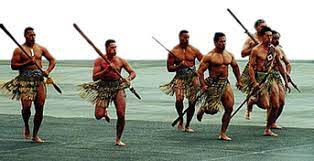
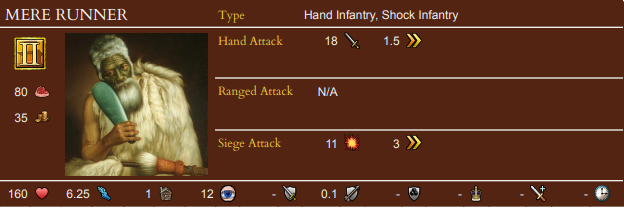
The Maori used a variety of smaller clubs made of wood, whalebone, and greenstone (jade). However, the ones made from greenstone, known as mere were most prized. Their compact size and use in close-quarters fighting makes warriors with this weapon a great fit for a shock infantry unit.
There is a legend of a mere giving its user invisibility which could be an option for a card (similar ones available for Coyote Runners and Chimu Runners).
There is also a Maori dance called Poi that allegedly was to improve dexterity for handling a mere. This could be present as a card that improves the attack speed of hand shock infantry.

After gaining access to firearms, the Maori organized themselves into taua war parties and embarked on bloody wars of conquest known as the Musket Wars. One of their favoured weapons was the Tupara double-barreled shotgun so dealing AoE damage and firing quickly would represent this. Due to their late adoption, Taua Musketeers would not be accessible until age 3, but their delayed access would be compensated by stats that outclass most other musketeers in ranged combat.
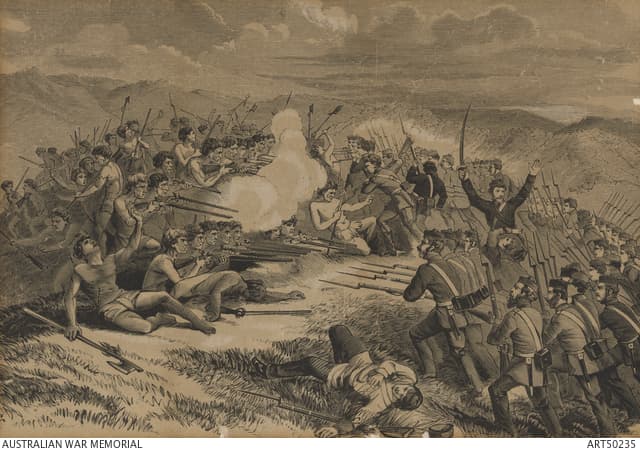

A H_eroa is a very unique weapon consisting of a large curved whalebone blade that is thrown underhand or used in melee as a long, bladed club. It had a cord attached to one end that was used to retrieve it after it was thrown. Their role in-game could be that of an amped up Azap. They would deal melee area damage at all ranges and have their attack speed scale with distance.

Siege Workshop Units

Traditionally, ranged weapons were almost entirely absent among the Maori. The exception to this was the Kotaha whip sling. Spears were placed into the ground with the end of the whip on the base, and then the thrower cast the whip forward and hurled the spear through the air. In sieges, they were also used to hurl flaming darts into fortifications. In practice, this unit could function like a hybrid of Huaraca (long range siege) and Crossbowmen. In some instances, they were used to throw multiple projectiles, so a card that enables more projectiles or a charged attack could be an option.
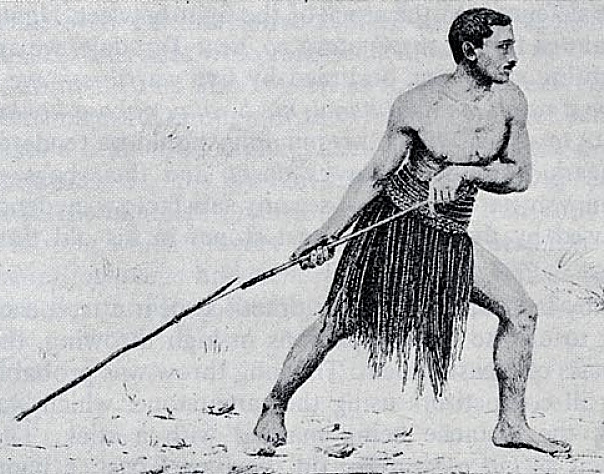
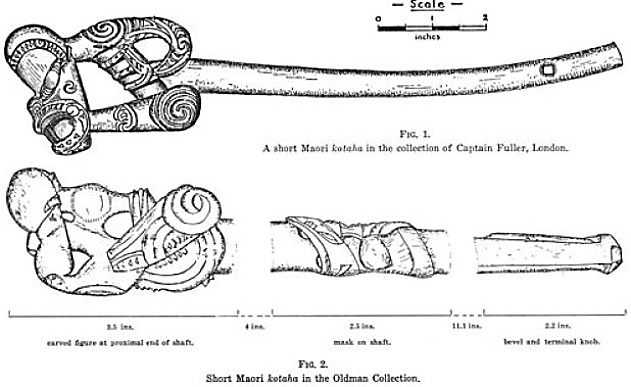

Tipao are stone throwing devices consisting of a green branch with one end fixed in the ground and the other with a sling. They were often used in games, but they also featured as a way to launch heated stones at fortifications. The function of this unit would be best suited as something similar to a scaled down Culverin with more utility against ships and buildings.

For felling very large trees the Maoris used what was essentially a large adze mounted on the end of a ram. This unit could function just like a normal Ram in combat and also have the ability to chop wood at the same rate as a Villager. In some cases, the ramming was further enhanced by using a form of ballista to propel the ram into the tree. This could be depicted as a card that improves both attack and the rate of wood gathering.
This unit is an amalgam of several different weapons and strategies used in sieges.
The first component is the huata spear. These spears were up to 40 feet long and were wielded by multiple men from defensive positions behind a palisade. The ends were sometimes even barbed with stingray spines.
While huatas were used primarily from behind defensive walls, the Maori also constructed sapping shields for approaching defenses from the attacking side. These shields consisted of woven flax and reeds and may have been similar to tukutuku panels. This combined with the Maori wood carving tradition of whakairo and their palisade constructions could come together as a mantlet that would shield the spearmen behind it.
When sieging buildings, a Huata Mantle could use a device called a rou. This was essentially a simple grappling hook that was used to tear down walls.
This unit would function similarly to other Mantlets but with a shorter ranged melee attack. It could also possess the deflection ability (as all Mantlets should have), and the “lance” charge ability.
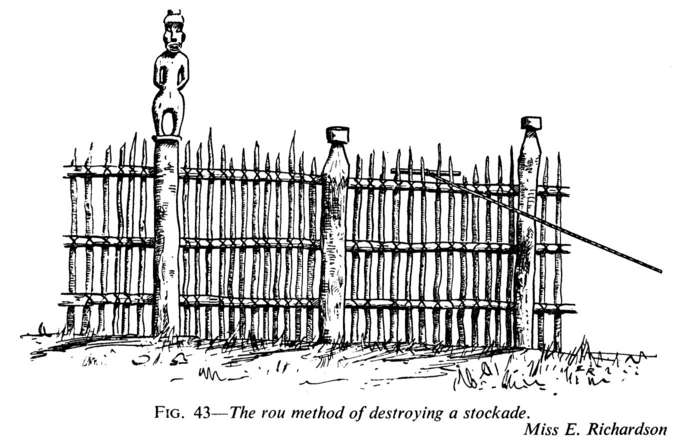

The artillery used by the Maori were primarily of naval origin. One such piece of naval artillery they used is the Carronade. This unit could also feature as a regional unit available to other potential civilizations that captured and used naval artillery such as the Hawaiians and Haida. It could function like a longer range Falconet with a larger bonus against ships.
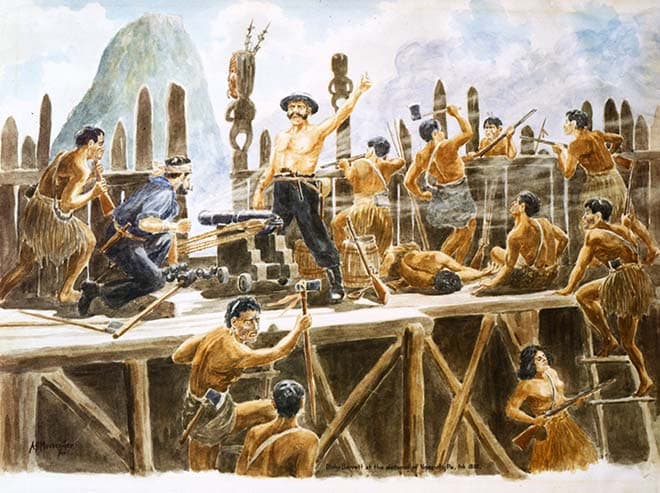
General Units

Rangatira are chieftains who would act as the Maori Hero unit. armed with a Paiaka A Haka mechanic could be implemented via the Rangatira being able to stun enemy units or buff adjacent units.

Toas are brave warriors who would act as the Maori militia unit. Fights by throwing spears and loses health over time.

Tohunga were priests and respected experts in a variety of crafts such as healing. They would be the healers of the Maori. A Tokotoko staff could act as a tool for defense and ceremony.
Naval Units

Wakas are Maori canoes. The standard Waka unit would represent the smaller waka tīwai that were used for river travel.

Waka Taua are large war canoes used to transport Maori war parties. They would occupy the same role as their native equivalent. In naval battles, ramming was the tactic used to destroy enemy vessels. Melee combat for naval units could also be a more general component of all naval battles so that civs like the Maori have a more level playing field.

Waka Hourua were the huge migration canoes used in the first voyages to New Zealand. These large ships could occupy the same role as Galleons and be able to train units.
Fishing Boats
Fishing Boats could be based on the Waka Korari that were used by the Moriori.
Cards
The following are just a small selection of potential cards for this civilization. Many more are possible.
Mau Rakau - upgrades melee warriors
Kauri Spars - Improves warship health and enables training a Monitor
Trojan Whale - enables Taiaha to use stealth and +10% whale gather rate
Poi - Hand shock infantry attack faster
Hangi - Villagers gather all food faster
Boyd Massacre - Gain food from each enemy ship you sink
Ngāpuhi Support - Ships Tupara Musketeers and upgrades them (Ngāpuhi were some of the first to adopt muskets). Other iwi could have cards that send and improve other units.
Pātaka - Whare slowly generate food and are visually updated to have a Pataka
Storage Pits - Buildings slowly auto heal



